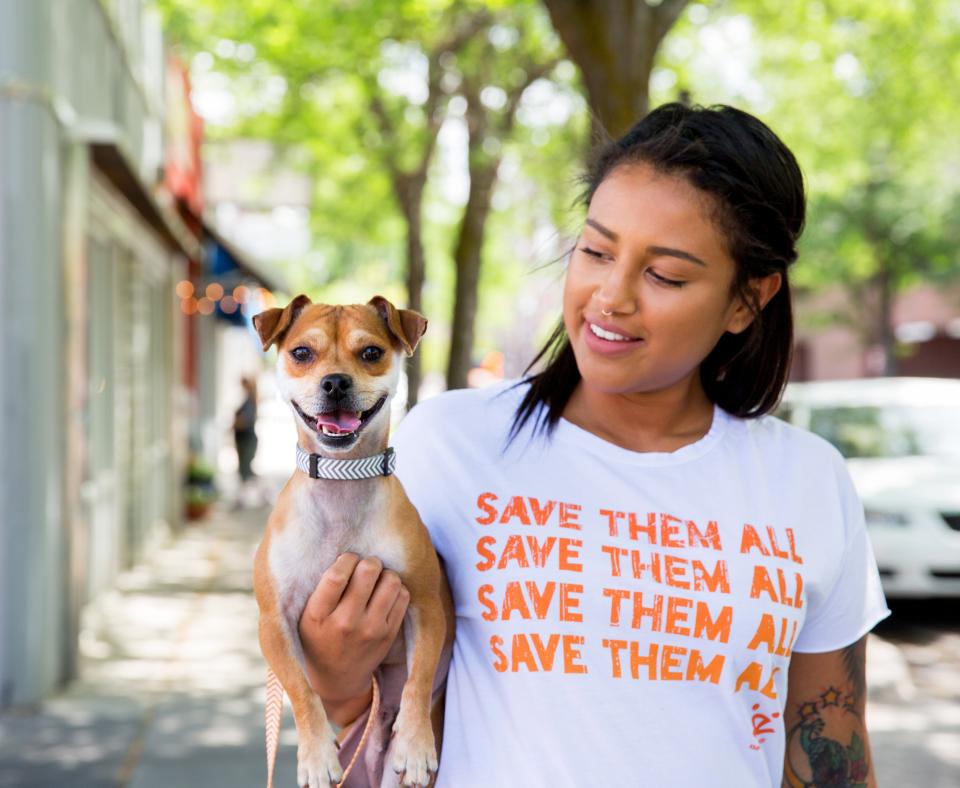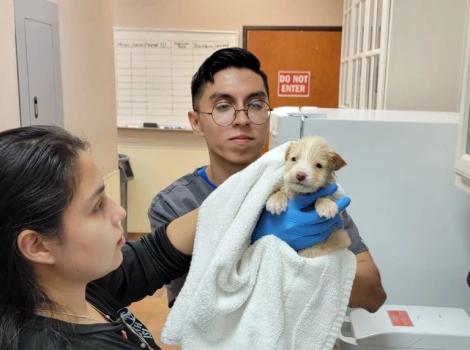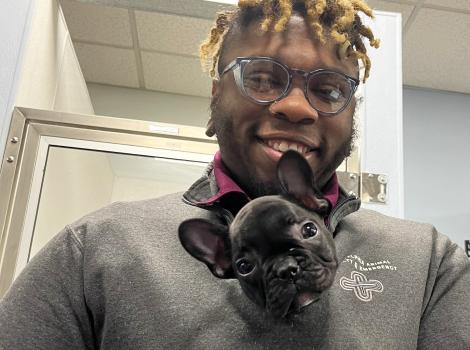Reaching Hispanic/Latino communities to save more pets
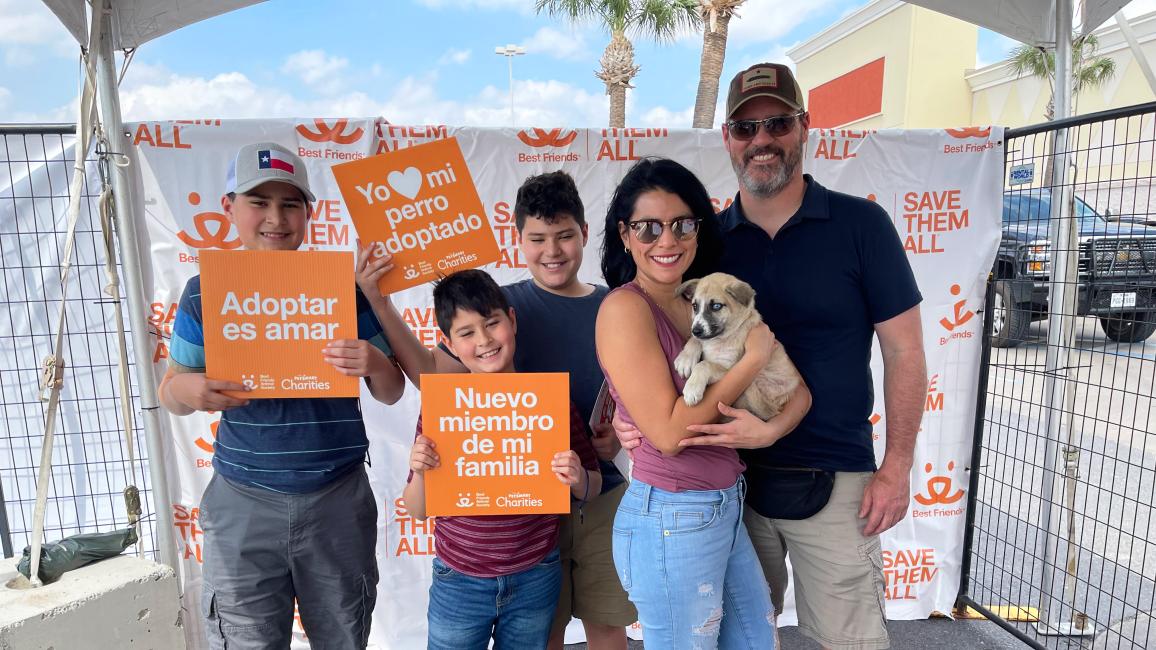
Mia Navedo-Williams was about 9 years old when she moved with her family to St. Louis, Missouri, from Puerto Rico. What might seem like an exciting change to some meant a whole lot of unknown for young Mia. Feeling a sense of loss of family members and friends left behind, she had one request for her parents: a dog.
Looking back, she says it just made sense to her: “I needed a best friend. I didn’t speak the language, was navigating a whole new world, and that was scary for me. A pet meant a buddy, and I really needed that.”
Mia is the former Best Friends senior manager of marketing strategy, leading a team that communicates with others from Spanish-speaking countries. Some of them have come to the U.S. seeking a new life, and others were born here and grew up speaking both languages. All of them, however, have pets in their lives and want information to make the best decisions for their animals and their communities.
In the following question-and-answer interview, we asked Mia about Best Friends’ outreach to Hispanic/Latino communities and how it supports our goal for every shelter in every community to reach no-kill by 2025.
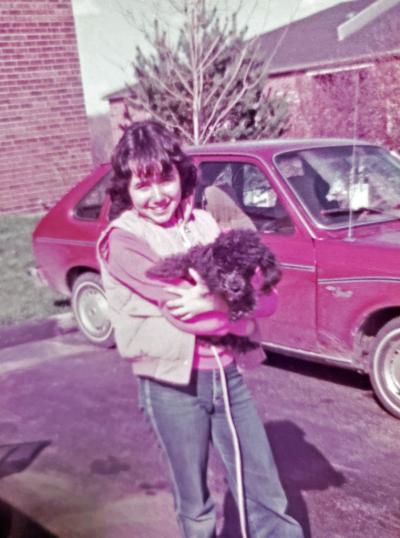
Why is there a need to market specifically to Hispanic/Latino people in animal welfare?
Here’s one example from my own experience. When I volunteered at a veterinary clinic in Grandview, Missouri, I noticed the lack of animal welfare information available in Spanish. We were seeing a surge in Spanish-speaking clients, and while I could translate their visit with the vet, I couldn’t find materials in Spanish that could explain spay/neuter, the importance of vaccines, microchips, etc.
People wanted and needed more lifesaving information, but none was available. I’m thrilled to help produce these materials as part of our ongoing national work at Best Friends.

What has been your primary area of emphasis?
Our team is primarily focused on community. In fact, Community is the new name of our team, and it’s fitting because our emphasis is on connection. For the Hispanic/Latino community, advertising isn’t the primary driver for decisions, but it’s a way to begin awareness. On our team, we ask ourselves, “What information is needed and how can we best meet that need?” And a key component to the plans involves engaging with the community.
Tell us more about how you engage with the community.
Community outreach is critical to our plans. We know that in addition to watching the local news in Spanish, Hispanics seek out much of their information about community services from people they know and trust — their friends and local “influencers” like their dentists, their hairstylists, and business owners they befriend while frequenting their shops.
If we can inform local businesses and community influencers about what animal shelters provide, then that message gets passed along to the public. So community outreach is part of all marketing plans and involves a lot of short yet meaningful connections.
You’d be surprised how welcome our information is to the people we meet. They want to talk about their pets, and we get to ask them if they know about their local shelter and what happens there. That’s when the conversation really takes off. We’ve had a great reception from local businesses that want to help. And that’s why that face-to-face engagement is critical.
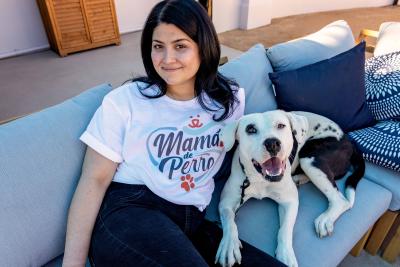
How can our message motivate Hispanic/Latino people to help the animals?
In our research we found Hispanics/Latinos weren’t aware of the challenges facing pets and animal shelters. But when told of the urgency, they felt adoption would be the primary way they would respond.
Overall, they feel a sense of social responsibility, and if an opportunity to help the pets in their communities presented itself, they would take it. However, they still say they turn to their friends first in making decisions, and their perceptions of pets in shelters as less desirable is an obstacle.
We work on informing them of the importance of adopting from their local shelter and reenforce the notion that love comes in all shapes, sizes, and mixed breeds.
What is the primary message on pet adoption for people not used to the formal adoption process?
First, we need to continue to make the adoption process less of a barrier in shelters across the country. Language should not be an obstacle to adoption, nor should filling out forms that question a person’s ability to take care of a pet responsibly. In many Spanish-speaking countries, there might not be any formal animal sheltering system, so the adoption application process is truly a foreign one.
I will never forget a focus group conversation that we had with a Venezuelan mother. She had moved to the States with her young daughter, and just like me, her daughter was excited about getting a dog — especially being in a new place. But once she arrived, she asked, “Where are we going to get the dog? There are no dogs in the street!” In many of our countries we see strays on a regular basis. The options are to save one off the street or buy one from a breeder.
We must inform, inform, inform that we have many adoptable dogs just waiting for loving families at their local shelter.
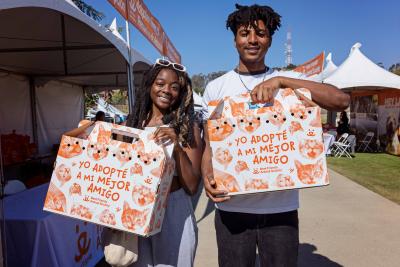
What’s the key for our Hispanic/Latino messaging to be successful and help save lives?
While our no-kill nationwide by 2025 theme is the overall message, we have to provide all of the layers of information that lead up to that: how a shelter works, why adopt, why vaccinate, what is fostering, etc.
I think about how the minute I learned about adoption and saving a dog, I chose to adopt at my local shelter. And now my children have done the same. I have three granddogs, and it all started with me learning about shelters.
One of my favorite quotes is from Maya Angelou, the late activist and literary icon who said: “When you know better, you do better.” Likewise, it’s important that our multicultural communities have the information they need, so more of them can make choices that support lifesaving.
Our goal, our mission is making sure that people — regardless of the language they speak — have the information they need to make choices that support building more compassionate communities. Isn’t that what no-kill is all about?
Let's make every shelter and every community no-kill by 2025
Our goal at Best Friends is to support all animal shelters in the U.S. in reaching no-kill by 2025. No-kill means saving every dog and cat in a shelter who can be saved, accounting for community safety and good quality of life for pets.
Shelter staff can’t do it alone. Saving animals in shelters is everyone’s responsibility, and it takes support and participation from the community. No-kill is possible when we work together thoughtfully, honestly, and collaboratively.



